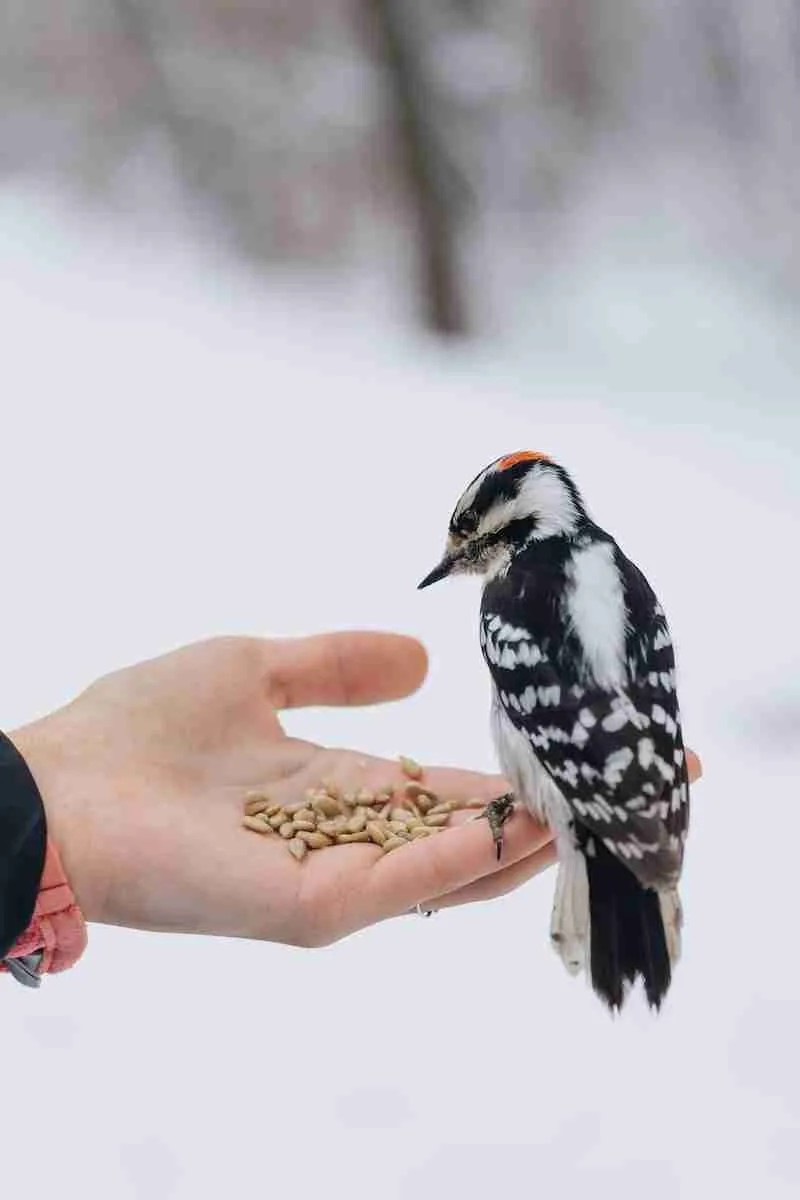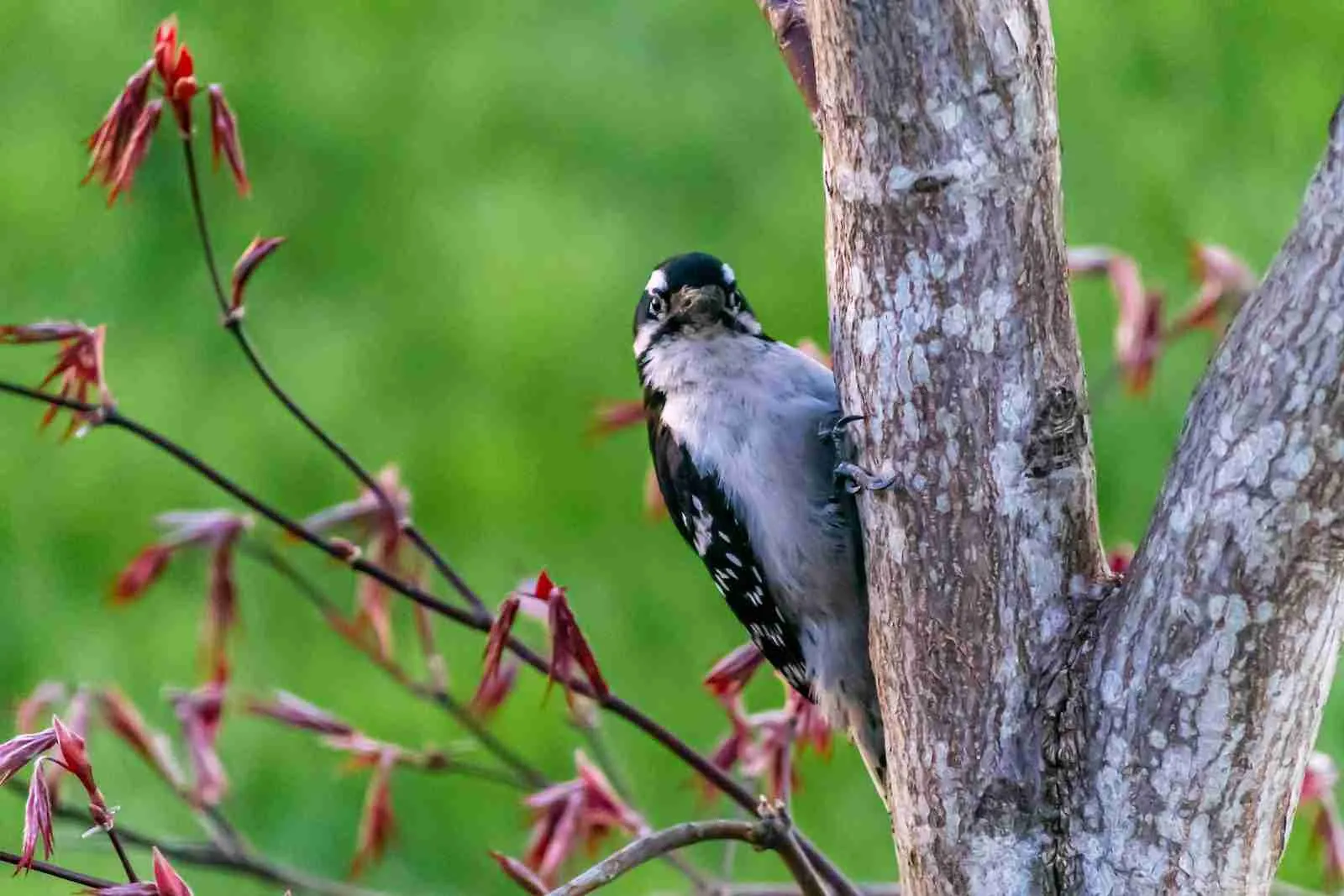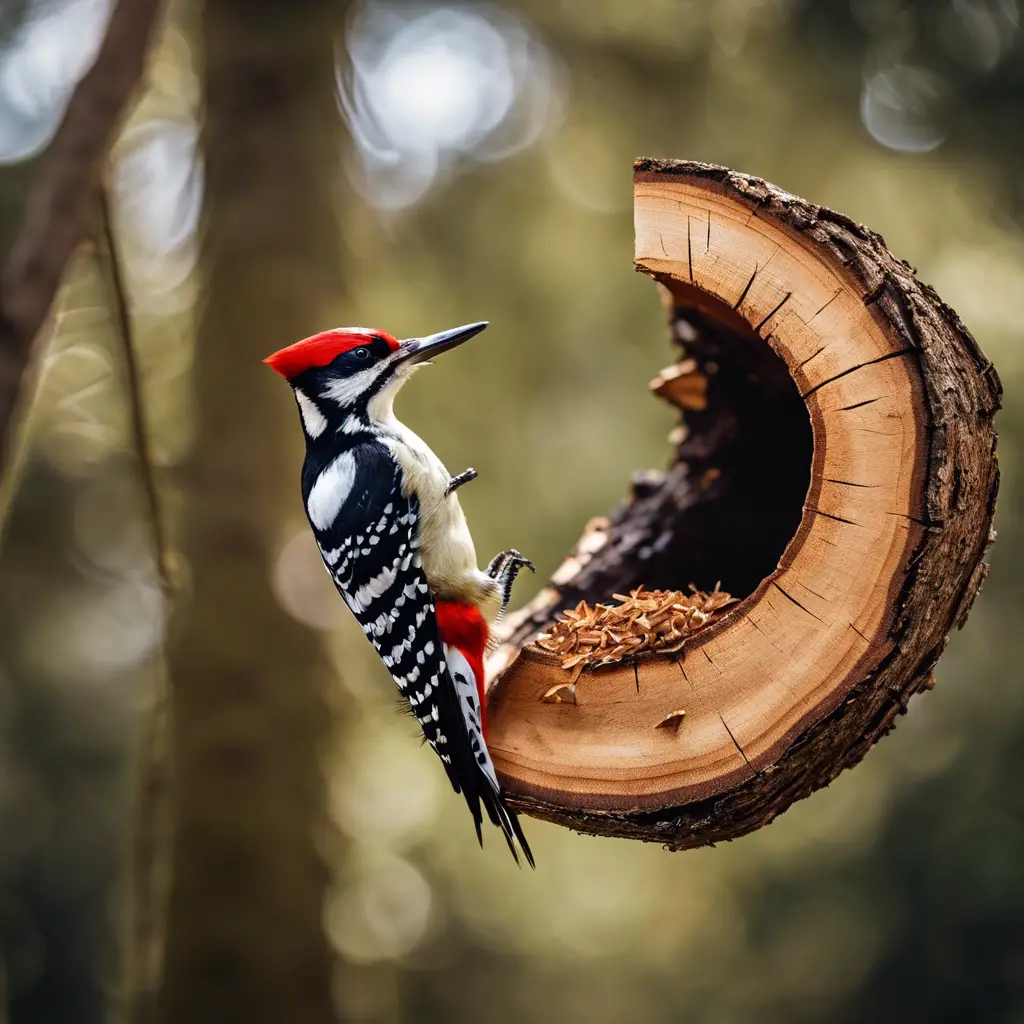Colorado is home to many different types of woodpeckers. We will discuss the four most common types of woodpeckers in Colorado: the black-backed woodpecker, the Williamson’s sapsucker, the red-headed woodpecker, and the downy woodpecker. We will describe their physical features and talk about some of the things they like to eat. We will also provide some tips on how you can attract these beautiful birds to your backyard!
With images and key information, we’ll describe the most prevalent woodpeckers in Colorado. Only legitimate sources were used, and an Ornithologist confirmed the data.
Most Common Woodpeckers in Colorado
Red-bellied Woodpecker
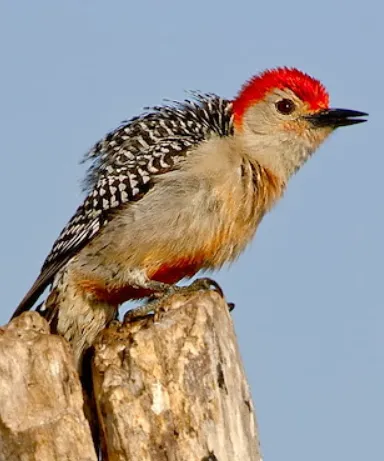
The Red-bellied Woodpecker is a medium-sized woodpecker that is found in the eastern United States and southeastern Canada. They are identifiable by their black and white plumage, as well as their red belly. These birds can be found in a variety of habitats, including forests, parks, and even suburban areas.
Red-bellied Woodpeckers are cavity nesters, meaning they build their nests in tree cavities. They typically lay between four and six eggs, and the chicks fledge around two months after hatching. These woodpeckers eat a variety of insects, as well as fruit and seeds.
Red-bellied Woodpeckers are relatively common birds, and their populations are stable. However, they are considered to be a species of concern in some states due to habitat loss.

Northern Flicker
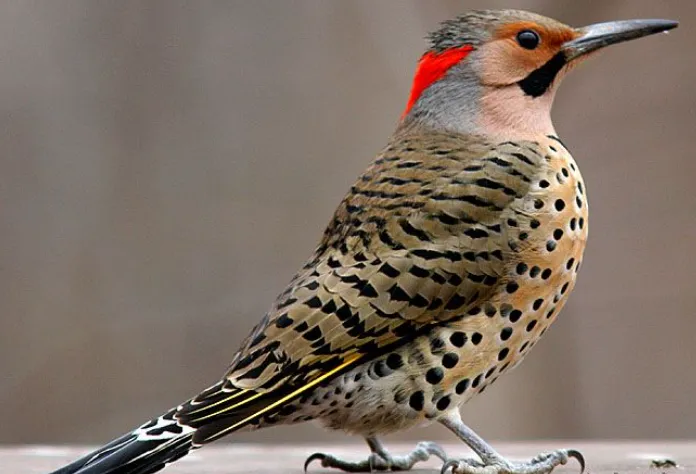
The Northern Flicker is a medium-sized woodpecker that can be found in Colorado. It has a black head and neck with a red mustache stripe. The wings are mottled brown and white, and the body is mostly brown. This bird feeds on insects, which it extracts from trees by drilling holes in the bark. It often perches on power lines and fences, making a loud “wicka-wicka” sound. The Northern Flicker is the state bird of Colorado.

Lewis’s Woodpecker
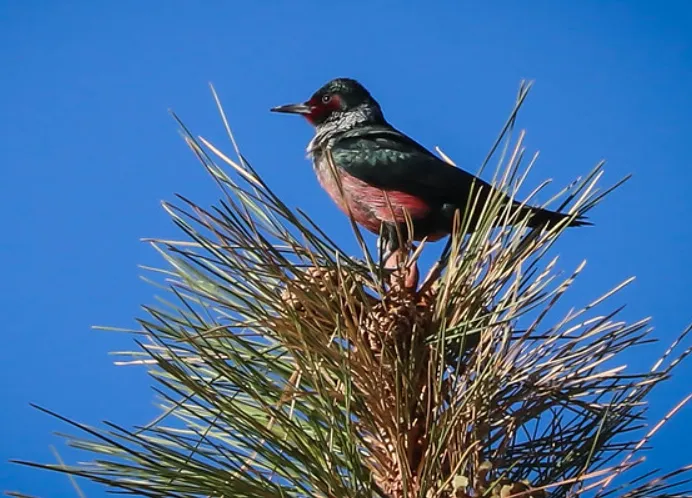
The Lewis’s Woodpecker is one of the most common woodpeckers in Colorado. They are about eight inches long and have a blackhead, white stripes down their back, and a red patch on their breast. These birds can be identified by their loud “yelp” call.
Lewis’s Woodpeckers live in open areas near trees, where they can find food. They eat insects, larvae, and sap from trees. These woodpeckers often nest in holes in dead trees or fence posts.
Lewis’s Woodpeckers are known for their acrobatic flying abilities. They use these skills to chase away other birds and animals that might try to steal their food. These woodpeckers are also very agile climbers, and can often be seen scaling vertical surfaces to get to their prey.

Downy Woodpeckers
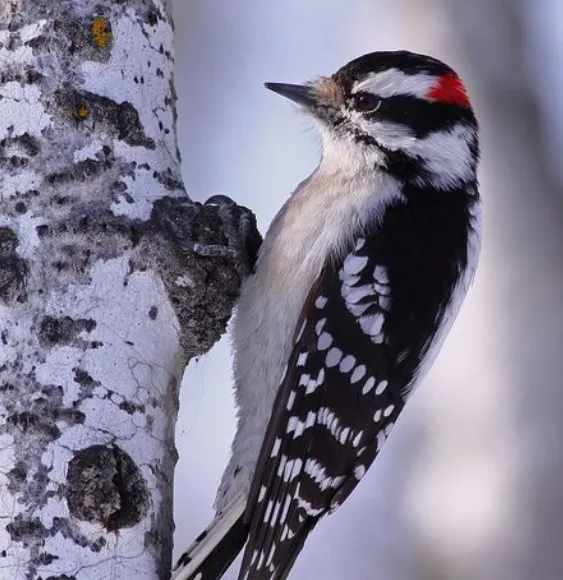
The Downy Woodpecker is the smallest woodpecker in North America. They are about six inches long and weigh around two ounces. They have a black back, a white belly, and a red cap. The Downy Woodpecker eats insects and spiders. They live in forests, parks, and gardens.
The Downy Woodpecker is a very acrobatic bird. They are often seen clinging to tree trunks and branches, moving up, down, or sideways. They use their bills to drill holes in trees to find food. The Downy Woodpecker is a very interesting bird to watch.

Red-headed Woodpecker
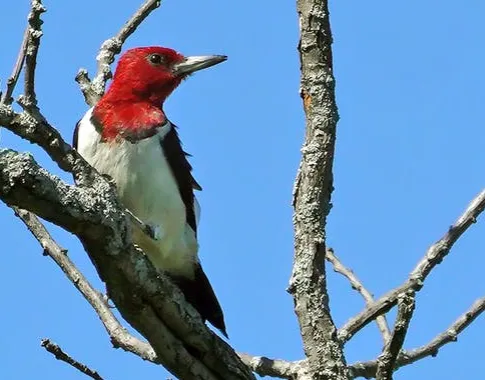
The Red-headed Woodpecker is one of the most easily recognized woodpeckers in North America. The male has a brilliant crimson head and neck, set off by a snow-white collar and belly.
The rest of the body is black, including glossy wings with two large white patches. The female is similar but has a less conspicuous redhead and mostly black body.
This woodpecker occurs in open woodlands, parks, and gardens across most of the United States and southern Canada. It feeds mainly on insects, which it extracts by pecking into tree bark with its stout bill. Nests are excavated in dead trees, and both sexes help to raise the young.
The Red-headed Woodpecker is a medium-sized bird, measuring about nine inches long. The wingspan is between 13 and 15 inches. Males and females weigh between two and four ounces.
This woodpecker is declining in many parts of its range, due to the loss of suitable habitat. It is currently listed as a species of concern by the IUCN.
The Red-headed Woodpecker is a beautiful and easily recognized bird that can be found in open woodlands and parks across much of North America.
It feeds mainly on insects, which it extracts by pecking into tree bark with its stout bill. Nests are excavated in dead trees, and both sexes help to raise the young.

Related post: Types of Woodpeckers in West Virginia
Red-naped Sapsucker
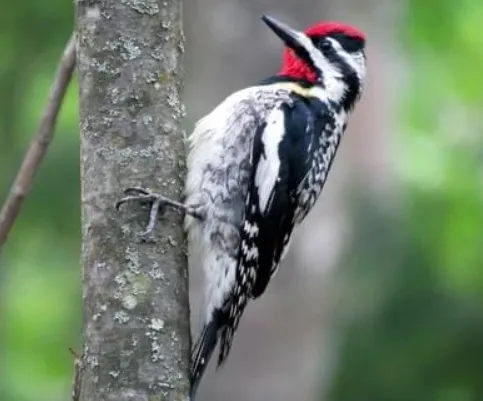
The Red-naped Sapsucker is a medium-sized woodpecker, measuring in at about 18 cm long with a wingspan of around 30 cm. The back and head are black, with a white stripe running down the back of the head. The throat and breast are also white, while the belly is yellow.
The nape and upper back are red, as is a patch on the lower back. Both sexes look similar, although the female may have a less distinct red nape. Juveniles have duller colors and lack the red nape.
The Red-naped Sapsucker can be found in open woodlands, often near coniferous trees. It is a year-round resident of Colorado, although it may move to lower elevations in the winter. It nests in holes drilled into trees, often using the same nest site for many years.
The Red-naped Sapsucker feeds on tree sap, as well as insects and fruit. It drills small holes in trees to reach the sap and then uses its long tongue to extract the sap. It often creates “sapsucker wells” by drilling several holes in a row.
The Red-naped Sapsucker is not typically considered a pest, as it does not damage healthy trees. However, it can be damaging to young or weakened trees.

American Three-toed Woodpecker
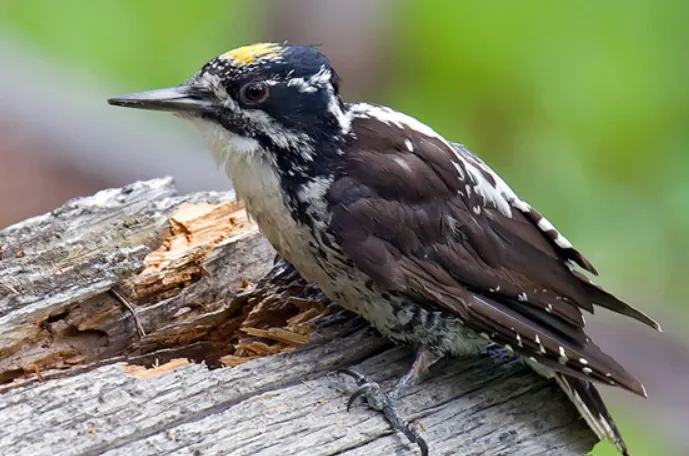
write about characteristics of American Three-toed Woodpeckers, their habitat, and where they can be found in Colorado.
The American three-toed woodpecker is a small to medium-sized woodpecker that is native to North America. The adult has black upper parts with white spotting, a white throat and breast, and a yellow belly.
The wings are black with white bars, and the tail is black with three white stripes. The bill is yellow and the legs are gray.
The American three-toed woodpecker is a cavity nester, meaning that it nests in tree holes that it excavates itself. It typically uses dead trees, but will also use live trees if there are no dead trees available.
This woodpecker is also known to use man-made structures, such as buildings and power poles, for nesting. The American three-toed woodpecker is found in forests throughout North America. In Colorado, it can be found in the mountains and foothills. It typically nests at elevations of 6000-12000 feet.
The American three-toed woodpecker is an important part of the forest ecosystem. It plays a role in controlling insect populations and helping to disperse seeds. It is also a keystone species, meaning that it has a large impact on the structure of its ecosystem.

Red-Breasted Sapsucker

The Red-Breasted Sapsucker is a small woodpecker found throughout North America. They are most easily identified by their redbreast, white belly, and black back. These birds are also known for their love of sap! The holes they drill into trees to get at the sap often provide valuable homes for other animals, such as bees and birds.
Red-breasted sapsuckers are generally shy birds, but during the breeding season, they can be quite vocal. They typically nest in holes in trees, either natural or manmade. The female lays between four and six eggs, which the male helps to incubate. After hatching, both parents help to feed the young.

Yellow-bellied Sapsucker
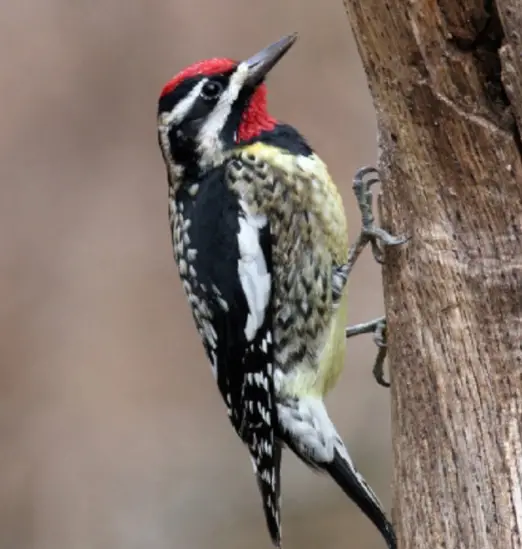
The Yellow-bellied Sapsucker is a medium-sized woodpecker that is found in North America. It gets its name from its habit of drilling holes in trees and sucking the sap.
The male has a bright red throat and breast, while the female has a yellow throat and breast. Both sexes have a black back with white stripes.
The Yellow-bellied Sapsucker is a migratory bird and can be found in Colorado during the winter. It prefers to live in coniferous forests, but can also be found in deciduous forests and parks.
The Yellow-bellied Sapsucker feeds on insects, sap, fruit, and berries. It is also known to eat tree frogs, lizards, and snakes.
If you are lucky enough to see a Yellow-bellied Sapsucker in Colorado, you will most likely see it in the mountains. The best time of year to see them is during the winter months.
So if you are bird watching in Colorado during the winter, keep your eyes peeled for this beautiful bird.

Acorn Woodpecker
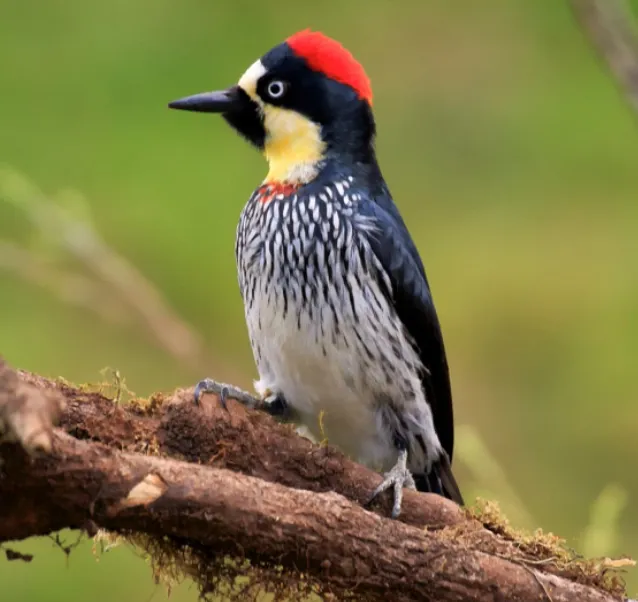
The Acorn Woodpecker is a small, black and white woodpecker that is common in the western United States. They are most often found in oak woodlands, where they get their name from their habit of storing acorns in holes they drill in trees.
These birds are also known for their loud drumming on trees, which can be heard from a great distance.
Acorn Woodpeckers are active birds that spend most of their time foraging for food. They eat a variety of things, including insects, acorns, and sap. They are also known to store food in caches for later use.
These woodpeckers are generally shy birds and are not often seen by humans. However, they can be quite vocal, making a variety of calls including a high-pitched whistle and a rapid series of staccato notes.
Acorn Woodpeckers are found in Colorado, where they are common in the foothills and montane regions. They can be difficult to spot, but their loud calls and drumming can often give them away.

Hairy Woodpeckers
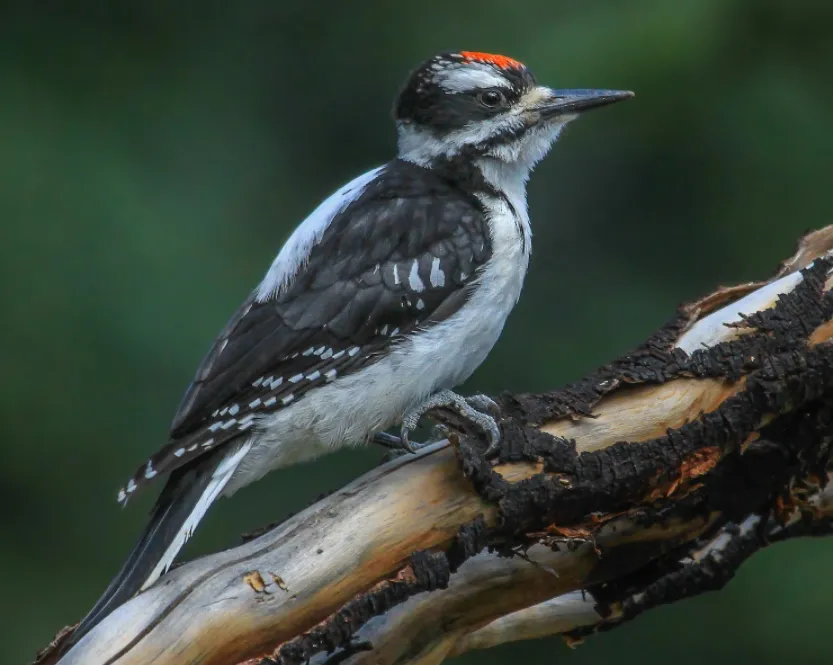
The Hairy Woodpecker is a medium-sized woodpecker that can be found in forests and wooded areas across North America.
This bird gets its name from the hair-like feathers that cover its head, neck, and back. While these feathers don’t offer much insulation, they do help the bird stay camouflaged among the trees.
The Hairy Woodpecker is mostly black with white stripes on its back and wings. It also has a white belly and a red patch on the back of its head. This bird usually measures between nine and ten inches long, with a wingspan of around fifteen inches.
The Hairy Woodpecker is an important part of the forest ecosystem. It feeds on insects, including beetles, ants, and caterpillars. It also eats fruit and nuts.
By eating these pests, the Hairy Woodpecker helps to keep the forest healthy and free of insect damage.

Williamson’s Sapsucker
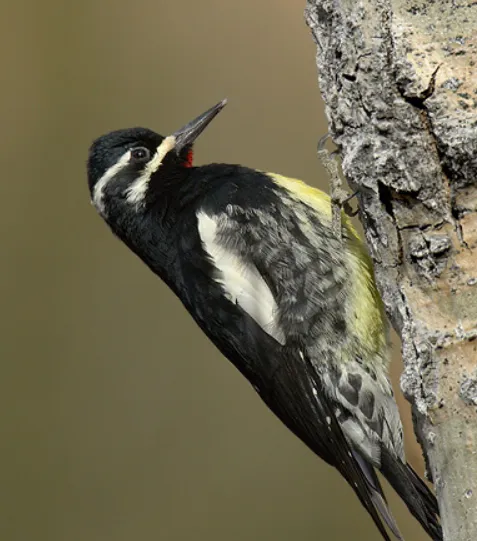
Williamson’s Sapsucker is a woodpecker that is mostly black with white stripes on its back. The male has a red throat and breast while the female has a yellow throat and breast.
They are about 18 cm long with a wingspan of about 30 cm. They are found in the western United States and Canada. In the winter, they migrate to Mexico.
Williamson’s Sapsuckers drill small holes in trees to get sap. They also eat insects, berries, and fruits. They nest in tree cavities that they make themselves. The female lays about four eggs at a time. The eggs hatch in about two weeks and the young stay with their parents for a few months.
Williamson’s Sapsuckers are common birds and you can find them in many different types of habitats. They are fun birds to watch and they are easy to identify because of their unique markings.
If you want to see Williamson’s Sapsucker, the best time to look is in the spring when they are migrating north. They are most active during the day, so that is the best time to see them.

How to attract woodpeckers to your yard in Colorado?
Provide food – Woodpeckers love suet and insects. You can buy suet cakes at your local hardware or feed store, or make your own. To make your own, mix together one part of rendered beef fat and three parts cornmeal. Add a little sugar and peanut butter for extra flavor.
Make a nesting site – Woodpeckers will also use nesting boxes. The hole should be about an inch and a half in diameter and at least six inches deep. Place the box at least ten feet off the ground in a tree or on a pole.
Provide water – Woodpeckers need water to drink and bathe in. A simple birdbath will do the trick!
How do you get rid of woodpeckers pecking at your house?
There are a few ways to get rid of woodpeckers pecking at your house. One way is to put up a birdhouse or nesting box for the woodpecker to live in. Another way is to place a sheet of metal on the side of your house that the woodpecker is pecking. The metal will scare the woodpecker away. Finally, you can try to scare the woodpecker away with a loud noise.

An avid ornithologist, zoologist and biologist with an unwavering passion for birds and wild animals.
Dr. Wilson’s journey in ornithology began in childhood and led him to obtain a Ph.D. in Ornithology from the prestigious Avian Research Institute. He has worked closely with renowned experts in the field and conducted extensive research and field studies globally.


